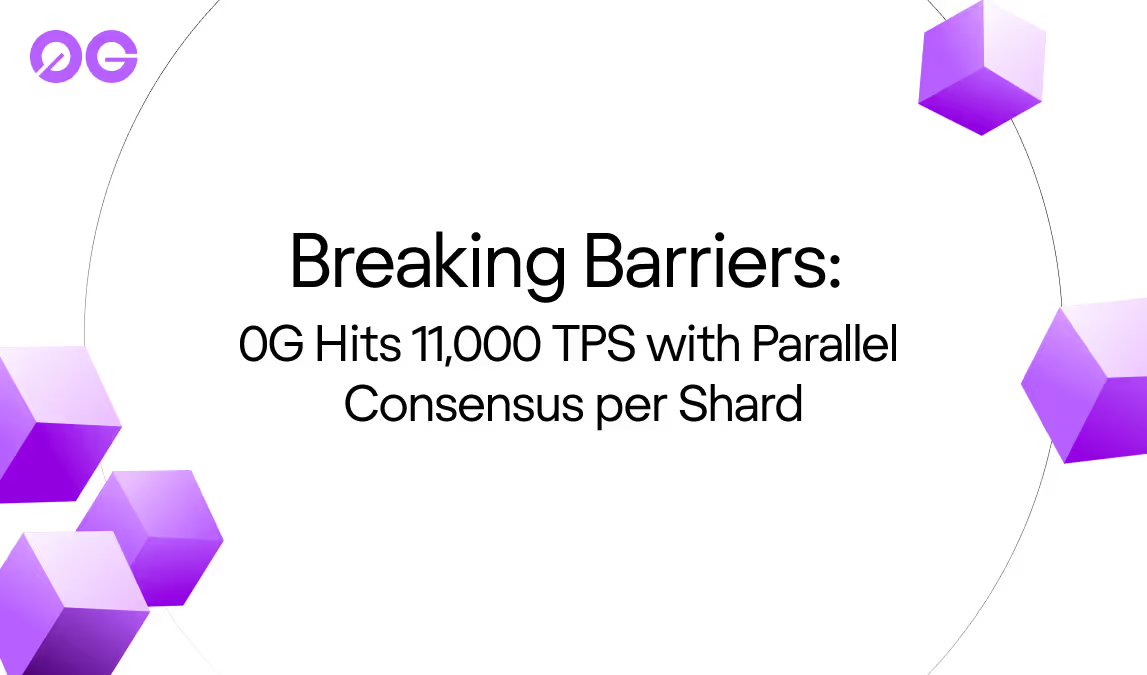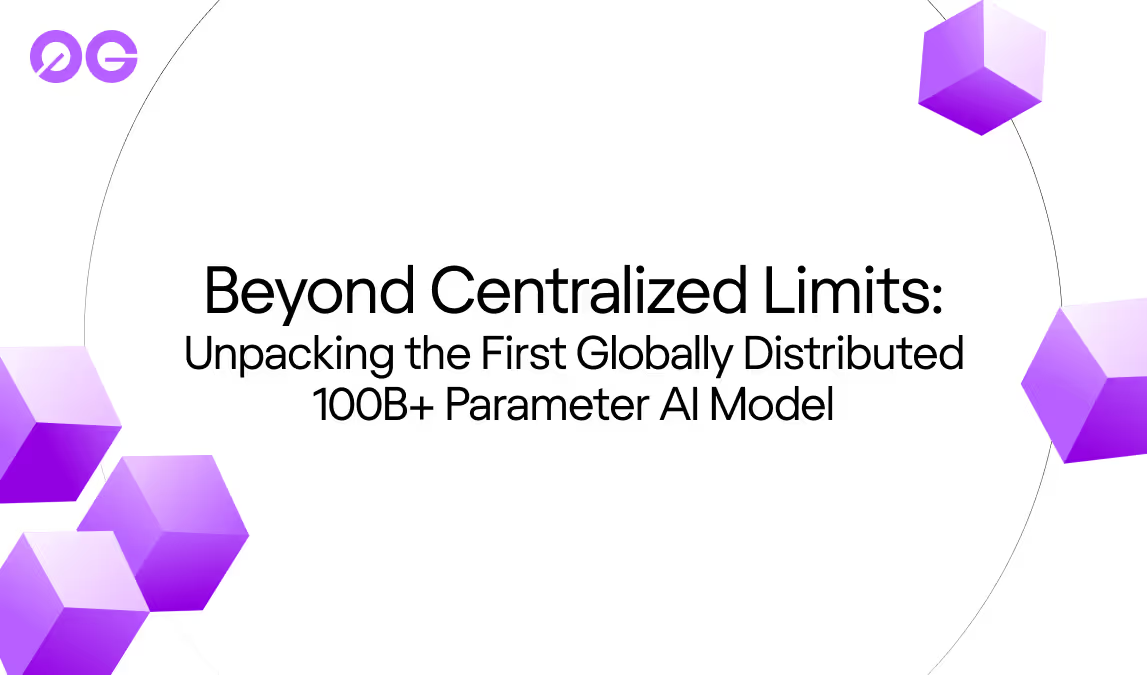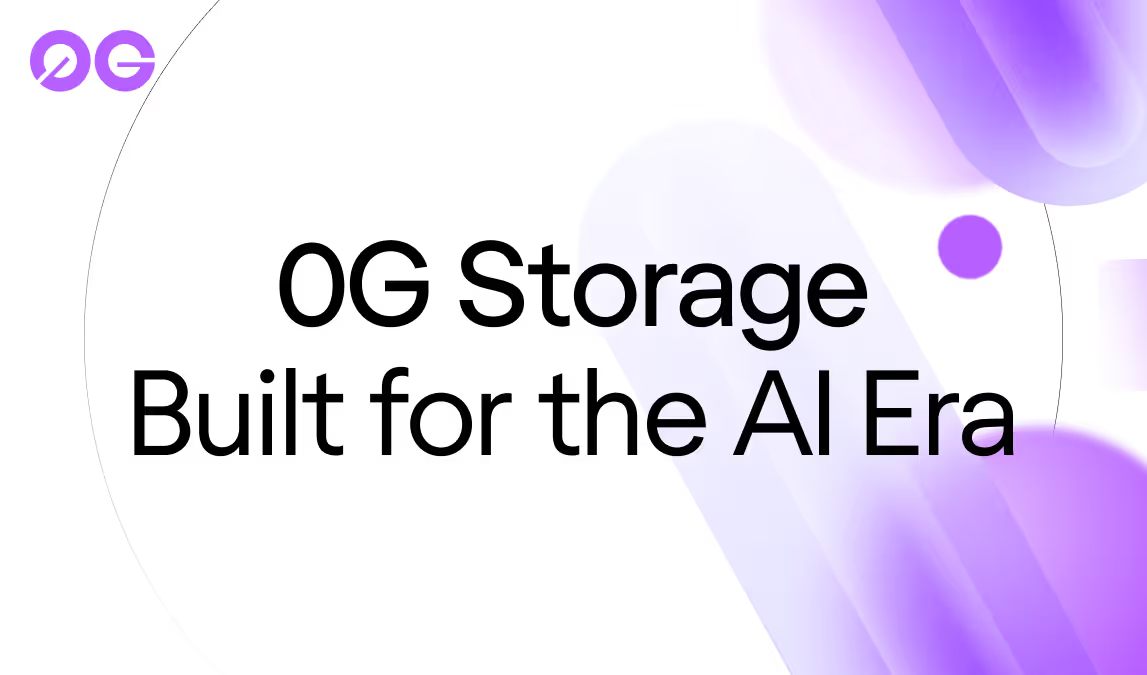

Introducing 0G’s V3 Testnet: Galileo
As 0G accelerates toward mainnet, we’re excited to launch the third version of 0G’s testnet: Galileo!
Named after the father of modern science, Galileo marks a major leap forward in the evolution of 0G, refining the lessons learned from V2 into a fresh testnet deployment. With a 70% performance boost and a more flexible, future-proofed architecture redesign, Galileo represents the most powerful version of 0G to date.
But before we get into what’s new, let’s revisit what got us here.
Lessons from Testnet Newton
Our v2 testnet saw incredible early traction: 2.5M unique wallets created, 350M+ transactions executed, and ~530k smart contracts deployed in a matter of weeks. This level of traction made it clear that the demand for 0G's high-throughput, AI-optimized blockchain was real. And it gave us something every great system needs early on: stress data at scale.
Testnet Newton was a prototype built on Cosmos SDK and Ethermint, optimized for rapid prototyping and early integration across 0G’s storage and compute layers. But as user activity took off, we identified several pressure points that held the system back:
- Mempool congestion: Tendermint’s default behavior failed to prioritize high-gas transactions, opening the door to DDoS-like spam patterns.
- Centralized performance ceilings: Consensus and execution were fused together in a single process, which made upgrading or optimizing these mechanisms difficult at times.
- Integration friction: Ecosystem teams were building quickly, but faced accumulating technical hurdles that would have required rework to maintain forward compatibility.
These architectural pressure points yielded invaluable insights and gave us the opportunit to raise the bar even higher. And with performance and feedback as our compass, we’ve built something even better.
What’s New in Testnet Galileo
Testnet Galileo offers a significantly faster, more capable, and future-ready environment for developers building on 0G, featuring the latest EVM standards and a robust architecture.
At its core, Galileo is a full rearchitecture of the 0G chain, built from the ground up to be faster, more modular, and more AI-ready than anything before it. It preserves the key strengths of 0G (high throughput, verifiable infrastructure, and seamless integration with storage and compute) but dramatically improves modularity, performance, and developer experience.
- Massive performance gains: Galileo delivers a 70% throughput increase over the previous testnet, and can process up to 2,500 TPS using an optimized CometBFT consensus. Finality remains fast and stable, while processing speed is dramatically increased.
- Smarter EVM: Galileo integrates the latest Ethereum upgrades from Shanghai, Cancun-Deneb, and is built to support the upcoming Pectra release. Developers can now use new opcodes like PUSH0 and benefit from better data handling, efficiency, and contract expressiveness.
- Evolvable architecture: We've replaced Cosmos SDK entirely with the Ethereum Engine API, decoupling consensus and execution into separate processes. This makes the chain easier to maintain, simpler to upgrade, and ready for parallel execution in the future.
- Smart contract-based validator delegation: Galileo validator delegation is implemented via smart contracts, rather than being hardcoded. This enables more flexible staking designs and faster iteration without requiring protocol-level changes.
- Enhanced Security & Faucet Reliability: Galileo’s fully revamped faucet system brings improved security and bot protection to ensure fair test token distribution.
- Seamless 0G integration: Users of 0G Storage and 0G Compute do not need to update their existing code. These services are being upgraded from the backend to work with Testnet Galileo.
What to Do Next
Since Galileo is a clean deployment, there’s no bridge or state migration from Testnet Newton. Technical documentation with detailed instructions for what to do next are available here.
Generally speaking, builders should:
- Get new test tokens through Galileo’s new faucet, after connecting your X account, providing your wallet address, and completing a captcha
- Configure your wallet using the new network configuration details (RPC URL, Chain ID, etc.) for Galileo
- Redeploy your contracts on Galileo (sample deployment scripts for popular frameworks like Truffle, Hardhat, and Foundry here)
- Track your onchain activity on Galileo’s new block explorer
If any questions or issues arise, you can flag them via the #support-tickets channel in 0G’s Discord.
Onward, Together
Inference workloads. Modular memory systems. Autonomous economic actors. These are the primitives that define the next generation of onchain computation. And as other layers of the 0G stack—storage, compute, service marketplace—continue to set new benchmarks, Galileo ensures that 0G’s base chain can keep up.
On the storage side, 0G has already benchmarked 2 GB per second in throughput—the fastest performance recorded in the history of decentralized AI. On top of that, our compute inference layer has no overhead compared to centralized systems and operates at significantly lower costs. Testnet Galileo ties together these accomplishments and leaves room for more, bringing us much, much closer to a mainnet that can serve as the high-speed, high-integrity backbone for decentralized AI.
It’s an exciting time to build on 0G. Let’s get to work!






